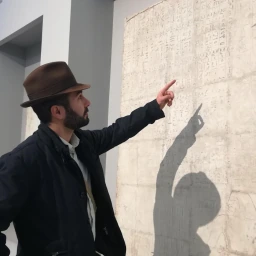The Golasecca necropolis of Monsorino is located in a wooded area of the Ticino Park, consisting mostly of chestnut and dense oak forests. It is accessed via a rough, sometimes wild path that seems to be a testimony to primordial times, to remote eras of human wandering. The forest has the characteristics of a special place, of inestimable importance. Like a treasure chest of green foliage, it preserves clear evidence of the transit of peoples and cultures.

Golasecca culture
Between the 9th and 6th centuries B.C., groups of human beings featuring a common cultural facies, known as Golasecca, decided to settle here. The origins of Golasecca culture are to be found in the developments of pre-existing late Bronze Age populations (Canegrate and Proto-Golasecca cultures) of the Lombard area. This was a gradual cultural evolution, probably marked by contamination with people from beyond the Alps. The Iron Age was, in fact, characterised by the slow and steady migration of different Celtic populations towards Italy. Moreover, changing climatic conditions and a general lowering of temperatures, pushed those peoples to seek warmer and more hospitable places.
The cultural characterization of Golasecca developed in this context. The favourable geo-climatic position, moreover near the Ticino river and Lake Maggiore, meant that the populations settled there acted as a bridge between the Italic peninsula and Europe. The archaeologists have demonstrated it by the numerous finds, such as Greek and Etruscan vases, relating to surprisingly distant peoples. It is therefore evidence of a flourishing trade, proven by the richness of the grave goods found not only in Golasecca, but also near Como.

Golasecca Necropolis
Remarkable is the development of complex settlements from the 6th century B.C. onwards, of which little evidence remains. The building materials used by Golasecca people, especially for dwellings, were easily subject to decay. So it is a factor that does not allow us to fully identify their characteristics today. It is assumed, however, that they were built with wooden poles. They were first set into the ground, then – from the 7th century B.C. – supported by circular, dry-stone foundations. A thick weave of branches and clay probably covered the walls and the roof with layers of straw and bark.
A significant number of proto-urban settlements were probably also located near Golasecca necropolis. This observation derives from a thorough examination of the archaeological remains. So that the variegated stone mounds preserved in the area. They are improperly termed “cromlech” according the European Celtic style of megalithic constructions. The choice of the Gallic denomination is not surprising, since Golasecca culture finally conformed to the one of La Tène following the cultural contamination of the Cisalpine peoples (5th-4th centuries BC).
Golasecca “cromlechs”
What we know about Golasecca culture is due essentially to the discovery of distinctive necropolis, with single or multiple burials, in tumulus form. Five of these are located at Golasecca, three of which are circular and two rectangular chamber tombs. Typical stone alignments characterised these burials, serving as markers, which are reminiscent of the Celtic megalithic cromlechs.

The first to identify the necropolis as a settlement area of a specific Golasecca culture was Pompeo Castelfranco at the end of the 19th century1. Since then, the burial mounds were investigated in order to determine the customs and funeral cults associated with this particular archaeological facies.
The rite of incineration
Incineration was prevalent: the body of the deceased was placed on a pyre and burnt with it. Then, the ceremony could take place near the tomb or in sacred areas within the necropolis, similar to the Roman ustrina. The bones were then cleaned of ashes and coals. Once collected, they were placed inside biconical urns, in the shape of a situla or olla, a ritual phase called bone collection, closed by bowls.


The funerary goods of Golasecca necropolis
The grave goods accompanied the deceased inside the urn. These were small unburnt bronze objects, usually jewellery (rings, pendants, fibulae…). They were often broken or deformed to mark the detachment of the deceased from the world of the living, and to ideally accompany him in the passage to the afterlife.


Other grave goods (weapons, tools, even chariots) were instead placed, together with the urn, inside the burial chamber made of lithic cists. These personal objects served to ensure the continuation in the afterlife of the activities carried out in life. They allowing existence to continue beyond death. Among the numerous ceramics found at Golasecca necropolis are vessels, bowls, cups and a characteristic tumbler, a distinctive element of Golasecca burials.
Samuele Corrente Naso
Notes and Bibliography
- Pompeo Castelfranco, Paleontologia Lombarda. Escursioni e ricerche durante l’autunno del 1875, in Atti della Società Italiana di Scienze Naturali, XVIII, IV, 1876; Due periodi della prima età del ferro nella necropoli di Golasecca, in Bull. Paletn. Ital., II, 1876. ↩︎
P. Laviosa-Zambotti, Le origini della civiltà di Golasecca. In St. Etr., IX, 1935; id., Civiltà palafitticola lombarda e Civiltà di Golasecca, Riv. Archeol. dell’Ant. Prov. e Diocesi di Como, XVII, 1939.


